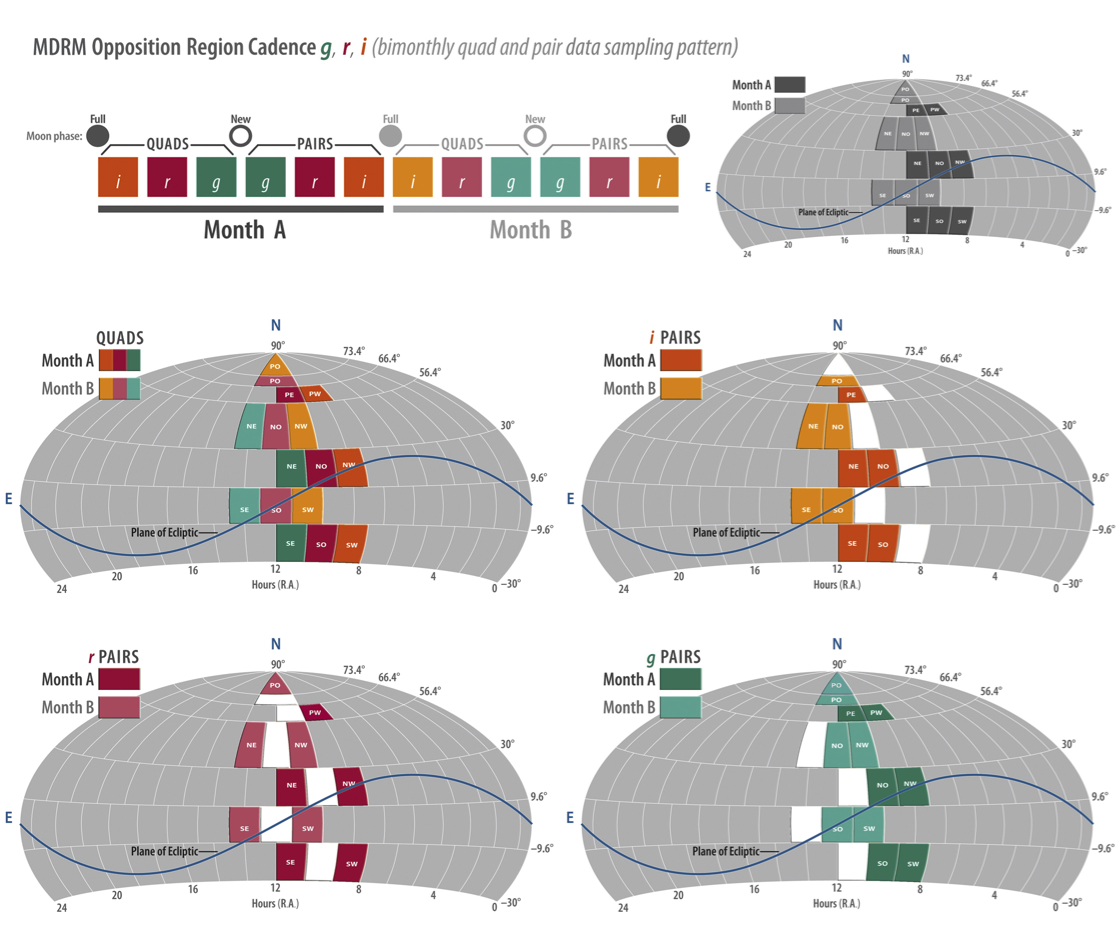The PS1 observing strategy was optimized for detecting moving objects as well as a uniform coverage of the 3pi survey
The following is taken from Chambers et al. (2016)
The primary reason for a discussion of the scheduling of the PS1 Surveys is to explain why the time domain of the 3π Survey has the detailed structure that it has. Prior to the formal start of the PS1 Mission on May 10, 2010, we used a contemporaneous version of the LSST scheduler to model the PS1 Mission as defined by the Design Reference Mission Chambers & Denneau (2008) and smaller in Summer in accordance with the length of night.
The scheduler further tweaked the size of the 3π slices to accommodate time for the smaller PAndromedra and Pan-Planets surveys, and assumed that the MD surveys, which are fairly evenly distributed in RA, could be fit into a constant nightly time allocation. The observing pattern from the DRM (applicable from 2010-05-10 - 2012-01-14) is schematically shown. An Observing Cycle (OC) is defined as one lunation. The sky areas and filter coverage observed in an example OC are illustrated in this figure.
 |
|---|
| Figure 8 from Chambers et al. (2016) - the DRM twilight and opposition scheduling cadence |
Clearly one needs to observe, on average, 1/12.37 of the sky per Observing Cycle per filter (12.37 is the number of lunations in one year). This corresponds to a slice of sky from the pole to δ=−30 which is roughly 4 hrs in right ascension. This mean value was expanded or compressed a-priori for the length of night and to adjust for the non-uniform impact of the smaller surveys in their RA distribution. One aspect of the PS1 3π Survey is that the z,y bands are observed out of phase with g,r,i by months, whereas g,r,i might be taken in the same night or be out of phase by days. PS1 defined two distinct kinds of slices, the Opposition slices, where the sky within about 2 hours RA opposition was observed in g,r and i bands, and “Wing” slices which were near the meridian at twilight. The reasons for this are given in detail in Chambers et al. (2016).
It was eventually realized that a modification to the DRM was necessary. The DRM was done entirely in pairs with the assumption that observations of NEOs in pairs separated by one or two nights could be linked. As a matter of experience that turned out not to be the case. However simply switching to quads, or four exposures per night separated by TTIs would put the year worth of exposures for a given field in a given filter all into one night. This would have endangered the photometric survey, reducing the number of opportunities to have a photometric night, critical for ubercalibration (see Magnier et al. 2017c). The solution, called the Modified Design Reference Mission or MDRM, which was settled upon is shown in Figure 9.
Full details can be found in Chambers et al. (2016)
 |
|---|
| Fig 9 from Chambers et al. 2016 : the MDRM opposition cadence (for the MDRM, the observing cadence and pattern were changed for gri but the pattern for z and y remained the same as in the figure for the DRM above. |
